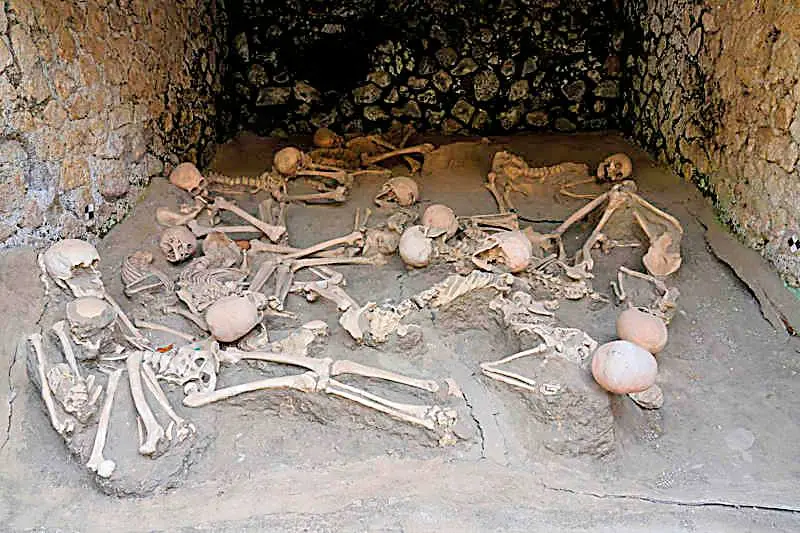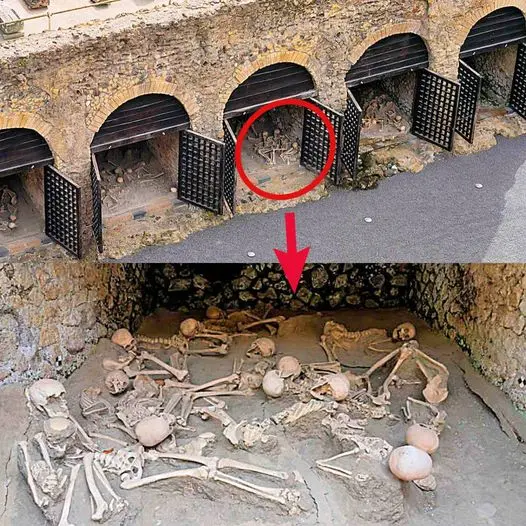The ancient beach of Herculaneum, now open to visitors, offers a haunting look into the past with its dozens of skeletons from Vesuvius. This remarkable archaeological site, similar to the famous Pompeii, was buried under volcanic ash almost two millennia ago during the catastrophic eruption of Mount Vesuvius. Today, the recently reopened beach area offers a unique opportunity for history enthusiasts and tourists to walk among the remains of those who tragically perished while trying to escape the fire. easier.

Discover the fascinating history of Herculaneum
Herculaneum was once a prosperous Roman city, with luxurious villas, large public baths and bustling markets. However, the catastrophic eruption of Vesuvius in 79 AD abruptly ended the city’s prosperity. Unlike Pompeii, which was buried in volcanic ash, Herculaneum was submerged under a thick layer of mud and lava, which helped preserve its buildings, artifacts and even the skeleton. remains of its inhabitants.
Reveal the secrets of the past
Visitors to the ancient beach of Herculaneum can explore the newly accessible area where dozens of skeletons were discovered. These remains tell a moving story of despair and tragedy, as the people of Herculaneum sought refuge from the volcanic eruption. The beach, once a place of leisure and relaxation, became a place of last hope for those trying to flee the disaster.

A must see for history lovers and tourists
The reopening of the coastal area of Herculaneum offers an unparalleled opportunity to delve deeper into the life of the ancient Romans and their untimely demise. The site’s well-preserved ruins and skeletal remains provide a tangible connection to the past, making it a must-visit destination for history buffs, archaeologists, and curious travelers. as.
Plan your visit
Experience firsthand the chilling yet captivating story of Herculaneum. The reopening of the site allows visitors to follow in the footsteps of those who lived almost two thousand years ago. Explore the ancient beach, examine the skeletons and immerse yourself in the history of a city frozen in time.
Don’t miss the opportunity to visit the ancient beach of Herculaneum and witness the harrowing remains of one of the most devastating volcanic eruptions in history. Plan your trip today and discover the secrets of this fascinating archaeological treasure.





